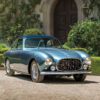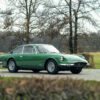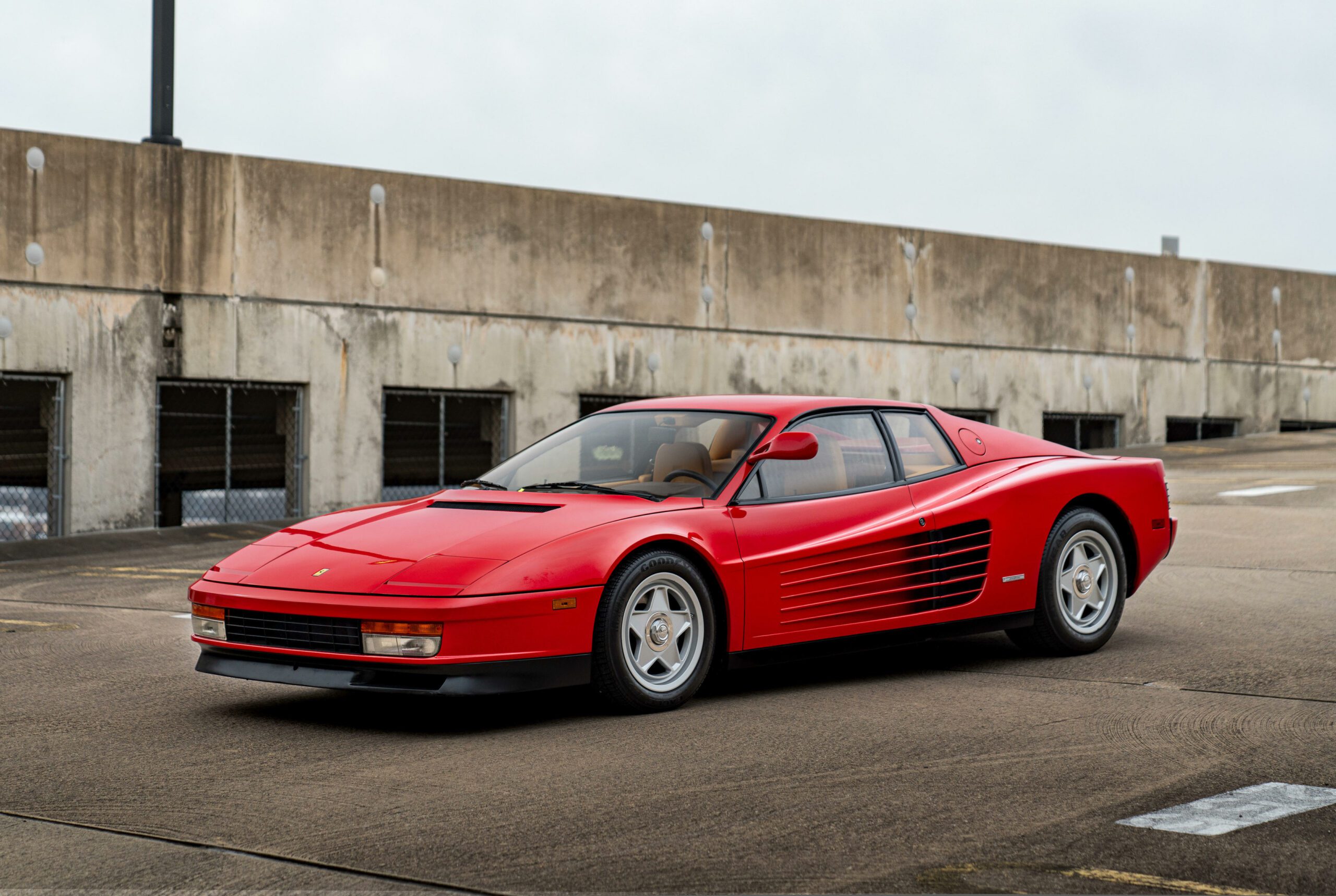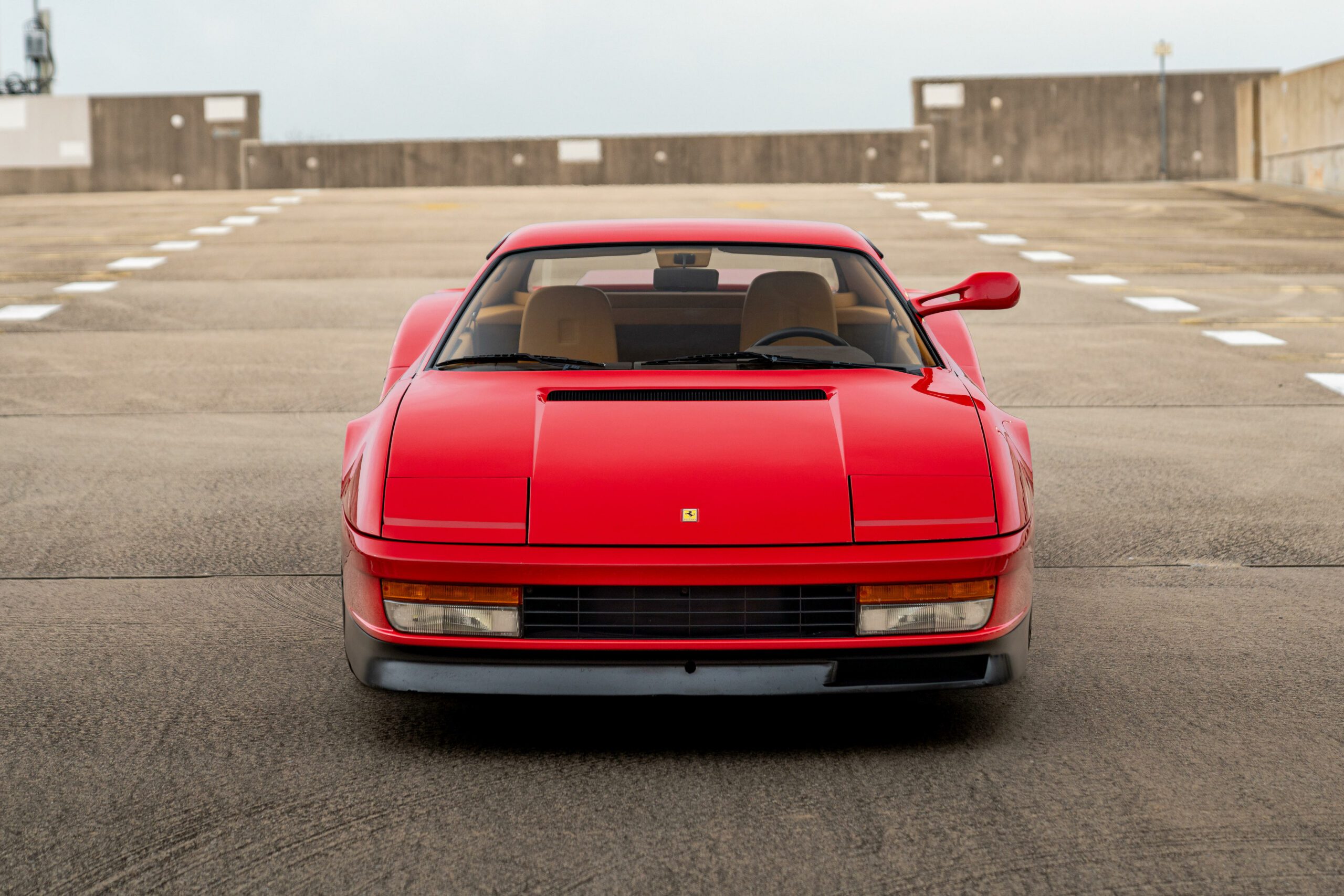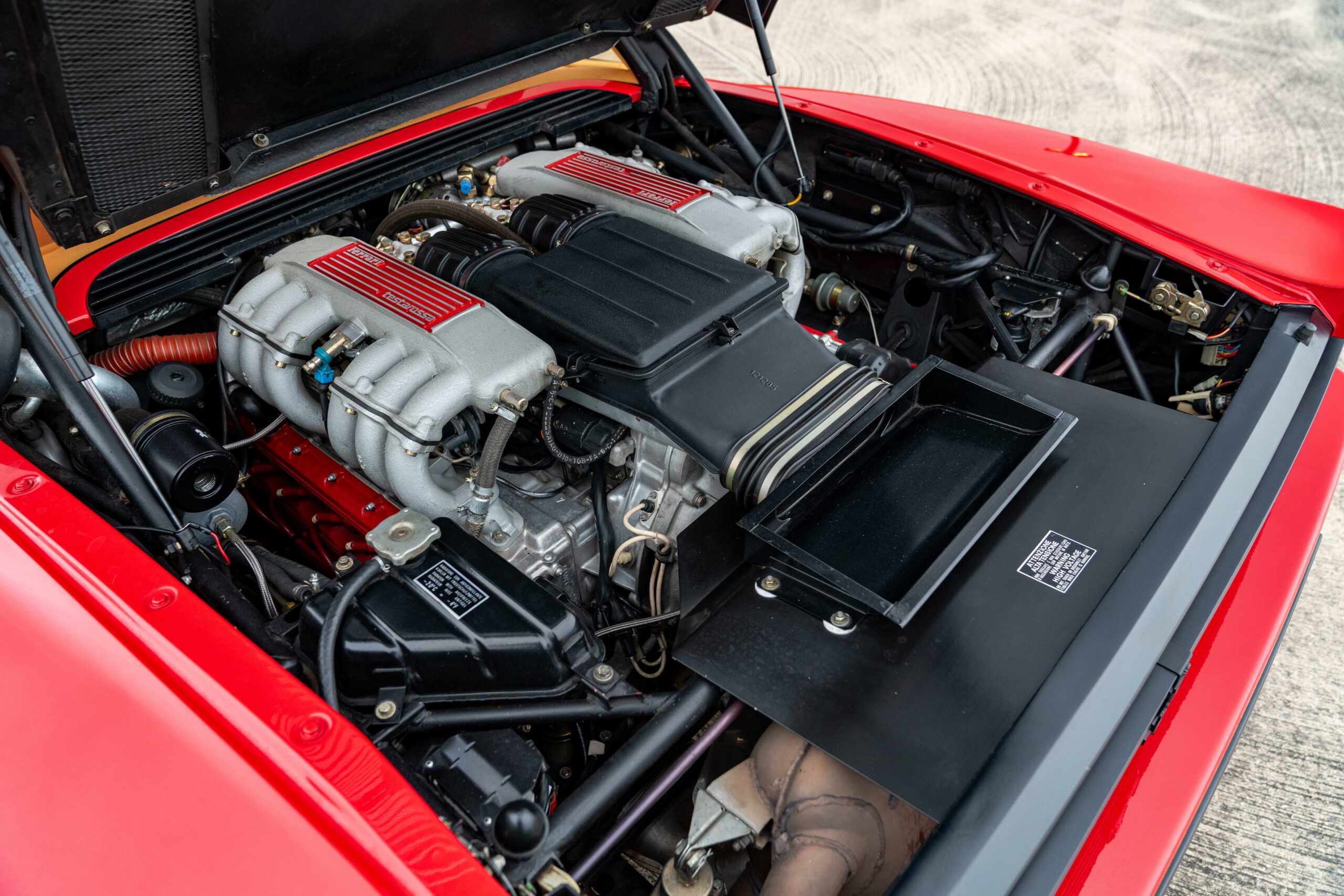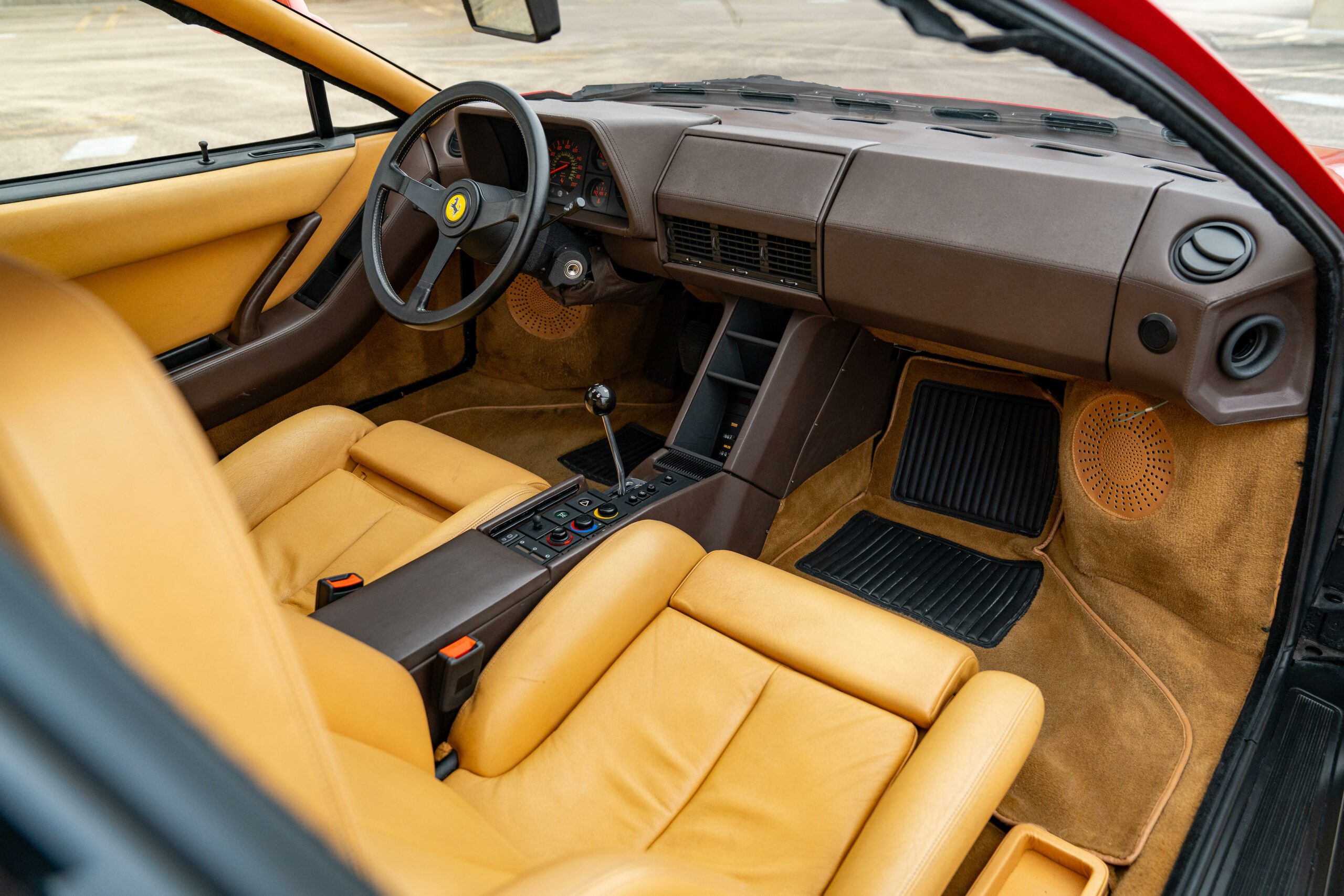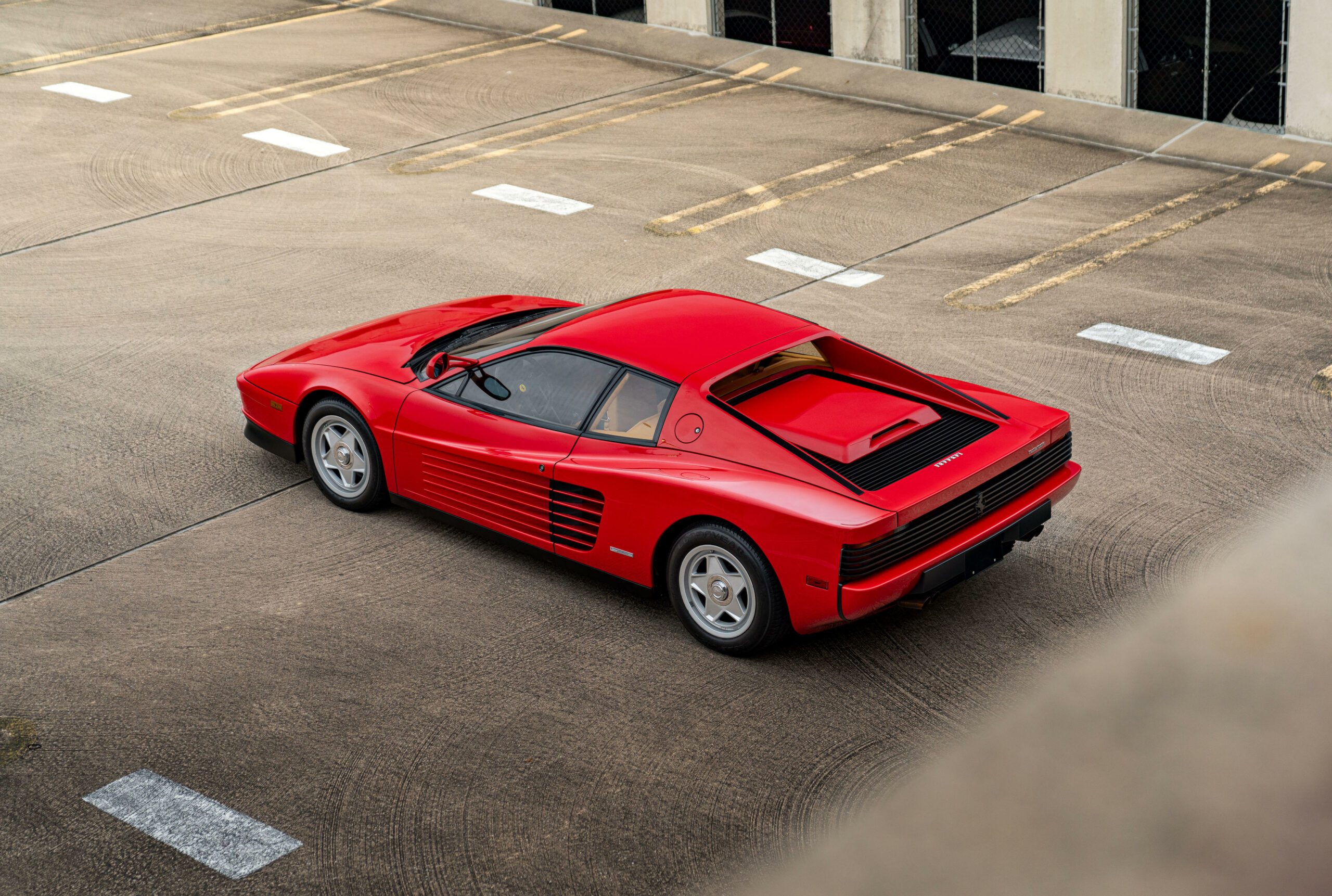When Ferrari introduced the Testarossa in 1984, it marked the revival of a renowned name from the Italian automaker’s heritage. Serving as a successor to the Berlinetta Boxer, the Testarossa maintained its predecessor’s mid-mounted, 5.0-liter, flat-12 engine, now equipped with four-valve cylinder heads that boosted its power output to 380bhp at 6,300rpm, enabling a top speed of 180mph.
Instantly recognizable, the Testarossa’s distinctive side strakes became one of the most iconic styling elements of the modern era, often imitated by others. Beyond aesthetics, these strakes served a functional purpose by channeling air to side-mounted radiators, resolving the cabin heat issues of its predecessor, the 512BB, and creating space for a practical luggage compartment. Despite its larger size compared to the 512BB, the Testarossa offered a roomier cabin and wider tires while maintaining a sleek profile without the need for additional spoilers, thanks to its adept combination of high downforce and low drag coefficient.
Constructed primarily from lightweight aluminum, with steel doors and roof, the Testarossa managed to shed weight compared to its predecessor. Inside, the well-appointed cabin boasted luxurious features such as air conditioning, a tilting Momo steering wheel, and ample leather trim. Notably, the Testarossa stood out among its competitors for its light controls, excellent drivability, and remarkable tractability, making it a sought-after choice for enthusiasts drawn to its exceptional performance and striking aesthetics.
Upon its debut, the Ferrari Testarossa captivated automotive enthusiasts with its bold styling and performance. Early versions of the Testarossa, identifiable by a single high-mounted mirror on the A-pillar, earned the nickname “Monospecchio.” Production continued until 1991, with subsequent iterations including the 512 TR and the F512 M, each offering further refinements to this iconic model.
Source: Bonhams


